Celebrate St. Patrick’s Day in NYC 2025
Discover 10 ways to celebrate St. Patrick's Day in NYC this year, from eye-opening tours to Irish treats!

Prominently situated in the Morningside Heights neighborhood overlooking the park, the Church of Notre Dame has an interesting history and a unique architectural background, namely a grotto replica inspired by the site where Mary appeared to St. Bernadette in Lourdes.
The church was first erected in 1910 as a chapel and as part of the Church of St. Vincent de Paul’s mission. It was first operated by the Fathers of Mercy, who were a French community of priests and in 1915, Cardinal Farley dedicated the church. The church was later entrusted to the Archdiocese of New York in 1960, which led to a transition of responsibility and further expansion of the parish membership. A guiding principal of the church is to actively elicit the community’s influence and participation, which attribute to the diversity of the parish’s fabric. Notre Dame is associated with St. Luke’s Hospital as well as Columbia University. Columbia University was included in the church’s pastoral mission in 1988, leading to the first appointment of a Pastor of Notre Dame to the Catholic Chaplain at Columbia. Then lastly, the parish was transitioned to the Polish Province of the Dominican Order in 2003.
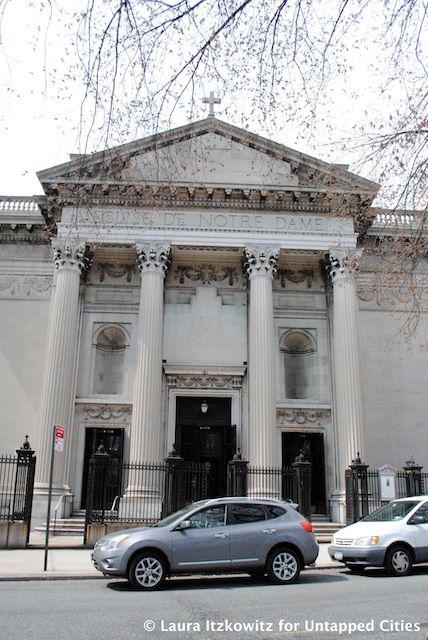
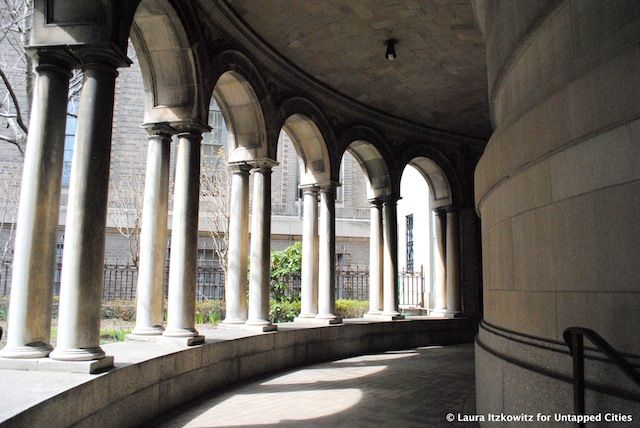
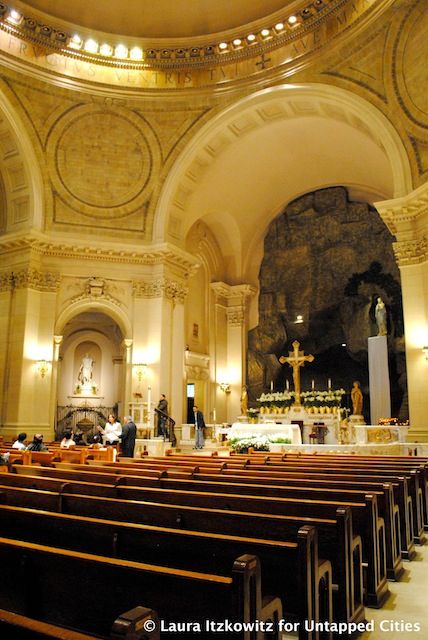
What is significant about the church architecturally is the replica of the grotto where the Heavenly Mother appeared to St. Bernadette in Lourdes, France in 1858. The grotto replica was first led by the architectural firm Dans and Otto and then the later expansion of the church was carried out by Cross and Cross. The latter architects decided to model the structure of the Church after L’Eglise des Invalides which is famous as the burial place of Napoleon Bonaparte (though his penis is stored in New Jersey).
The focal point of the church is the altar which is built in white marble and gilt bronze that contrast with the dark grey faux-stone grotto replica. At the altar is an eight-foot crucifix with the Holy Mother and Saint John at the sides of Jesus on the Cross. Uniquely, the halos of Christ, Mary, and the Saint John are composed of enamel and can be illuminated electrically. It was during the ’60s that the dome and roof line were completed—ornately carved with a low vault to draw the pulpit’s eyes toward the Heavens. The church is relatively small on the interior compared to most, yet the structure and position of the chapels in the corners of the interior give an allusion that the space is a lot more sizable. The property is surrounded by gardens speckled with statues.
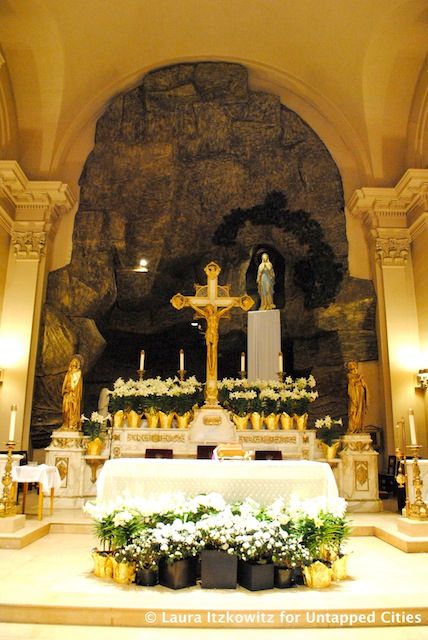
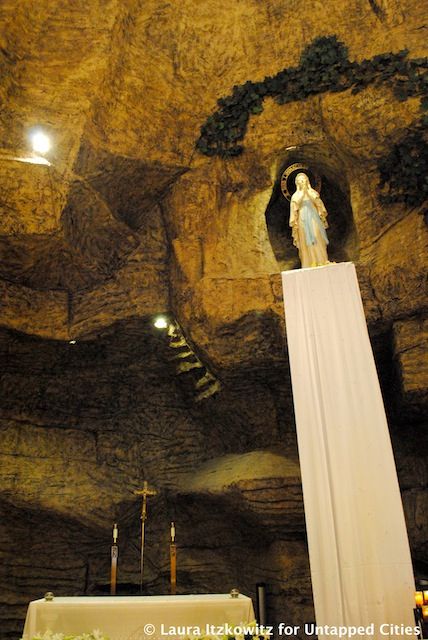
The New York City Landmark’s Commission inducted the Church of Notre Dame into the landmark society in 1967. The Commission gave a really great reflective and eloquent description of the church that is worth sharing: “The Church of Notre Dame is an outstanding example of the French neo-classical style adapted to a relatively small ecclesiastical design…. The building achieves a sense of monumentality through the imposing front entrance portico. The interior of the church is also perceived as a grand space because of the ingenious use of colossal marble columns at the side aisles which spring into soaring arches, dwarfing its visitors. The Rectory, based on Italian Renaissance precedents, is skillfully related to the church and well designed to fit the unusually narrow site.”
To learn more about the Church of Notre Dame and its parish, you can visit their website here. The church is located at 405 West 114th Street, New York, NY.
Subscribe to our newsletter